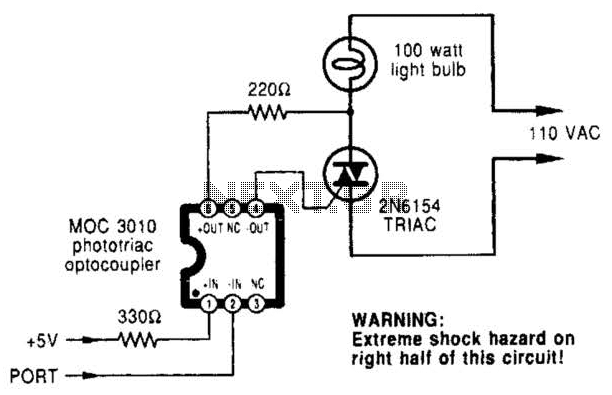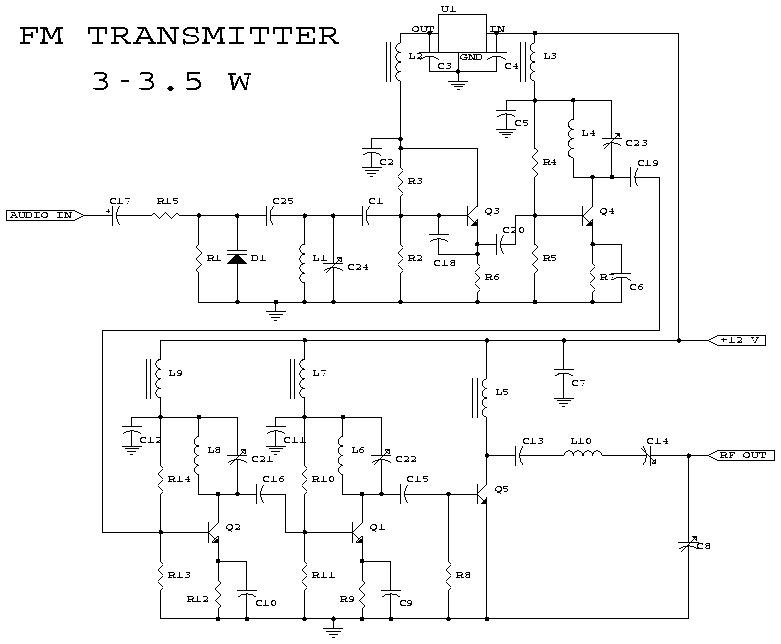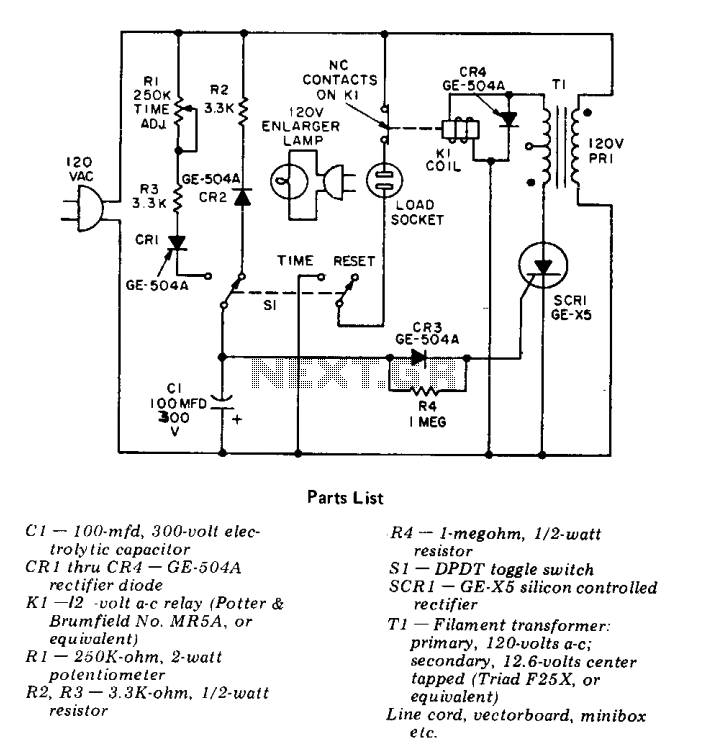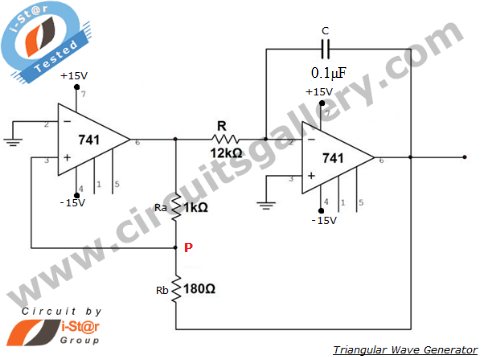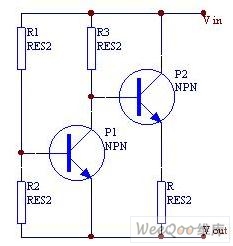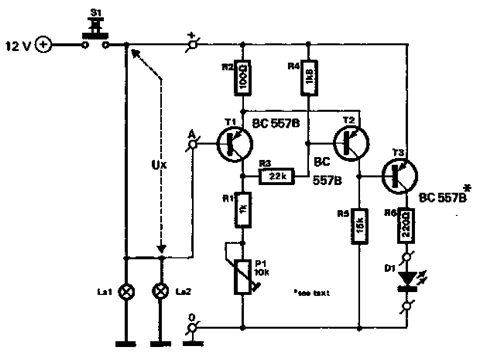
Simple short range portable FM transmitter circuit diagram

This is a simple 2N2222 transistor-based FM transmitter circuit that operates within the FCC (Federal Communications Commission) limits, meaning no license is required for its use. FM stands for Frequency Modulation, which is a method of transmitting radio frequency (RF) signals by varying the frequency of a carrier signal in accordance with the input audio signal. The portable FM transmitter can transmit sound or music to any standard FM radio receiver, with a transmission range of approximately 120 meters. An audio signal is introduced via a condenser microphone, which serves as a capacitive sound sensor. The simplicity and portability of this transmitter circuit make it superior to other FM transmitters. The transmission frequency can be adjusted using the variable capacitor C7. Main applications of this circuit include FM transmitters for cars, walkie-talkies, and wireless audio transmission. The signal from the condenser microphone passes through a coupling capacitor C1 and is amplified by transistor Q1, functioning as a pre-amplifier. The amplified signal is then applied to the base of transistor Q2, with resistors R2 and R6 providing the necessary biasing for the amplifier transistor Q1 (2N2222). The amplified audio signal is available at the collector of Q1 and is coupled to the base terminal of transistor Q2 via capacitor C3 and resistor R4. The combination of Q2, C7, and an inductor forms an RF oscillator circuit operating in the 80 to 130 MHz range, functioning as a voltage-controlled oscillator, allowing the frequency to be modulated by the input audio signal.
The 2N2222 transistor-based FM transmitter circuit is designed for efficient audio transmission while adhering to regulatory guidelines. The circuit architecture includes a condenser microphone that captures audio signals, which are then processed through a coupling capacitor (C1) to ensure that only the AC component of the audio signal is passed forward while blocking any DC bias. The pre-amplifier stage, facilitated by the 2N2222 transistor (Q1), amplifies the audio signal, making it suitable for further processing.
The biasing resistors (R2 and R6) are crucial for establishing the operating point of the transistor Q1, ensuring it remains in the active region for optimal amplification. The amplified output from the collector of Q1 is then fed into the base of the second transistor (Q2) through capacitor C3, which serves to isolate the audio signal from the DC biasing of Q2, preventing distortion.
Transistor Q2, along with variable capacitor C7 and an inductor, forms the core of the RF oscillator circuit. This configuration allows for the generation of RF signals in the 80 to 130 MHz range, which is suitable for FM transmission. The variable capacitor C7 is key for tuning the oscillator to the desired frequency, enabling the circuit to adapt to different transmission requirements.
The overall design emphasizes simplicity and portability, making it ideal for various applications such as vehicle FM transmitters, walkie-talkies, and wireless audio systems. The range of approximately 120 meters provides sufficient coverage for personal use, while the frequency modulation technique ensures that the transmitted audio maintains clarity and fidelity when received by standard FM radios. The design adheres to FCC regulations, making it accessible for hobbyists and professionals alike, without the need for licensing.This is a simple 2N2222 transistor based radio FM transmitter circuit within the FCC (Federal Communications Commission) limit, that is no license is necessary for using thisstable FM transmitter circuit. What is an FM transmitter FM stands for Frequency Modulation andFM transmitter is a radio frequency (RF) transmitter which uses frequency modul
ation of audio signals. Frequency modulation means that the frequency of a carrier signal is changed according to the input audio signal. The portable FM transmitteris able to transmit sound or music to any standard radio FM receiver. The range of this transmitter is near to 120 meters. Audio signal is applied via a condenser micro phone, which is a capacitive sound sensor. Simplicity and portability makes this transmitter circuit superior to other FM transmitters. The transmission frequency of this FM transmitter can be adjusted using the variable capacitor C7. The main applications of this circuit includesFM transmitter for car, walky talky, wireless audio transmitteretc.
The signal from the condenser microphone is passed through a coupling capacitor C1 and amplified by transistor Q1, which acts as a pre amplifier. The amplified signal is applied to the base of transistor Q2. R2 and R6 provide necessary biasing to the amplifier transistor Q1 (2N2222). Amplified sound signal will be available at the collector of Q1 and it coupled to the base terminal of transistor Q2 via the capacitor C3 and R4.
Q2, C7 and the inductor forms a RF oscillator circuit that operates in the 80 to 130 MHz range, which is voltage controlled oscillator so its frequency can be modulated by the input audio signal. 🔗 External reference
The 2N2222 transistor-based FM transmitter circuit is designed for efficient audio transmission while adhering to regulatory guidelines. The circuit architecture includes a condenser microphone that captures audio signals, which are then processed through a coupling capacitor (C1) to ensure that only the AC component of the audio signal is passed forward while blocking any DC bias. The pre-amplifier stage, facilitated by the 2N2222 transistor (Q1), amplifies the audio signal, making it suitable for further processing.
The biasing resistors (R2 and R6) are crucial for establishing the operating point of the transistor Q1, ensuring it remains in the active region for optimal amplification. The amplified output from the collector of Q1 is then fed into the base of the second transistor (Q2) through capacitor C3, which serves to isolate the audio signal from the DC biasing of Q2, preventing distortion.
Transistor Q2, along with variable capacitor C7 and an inductor, forms the core of the RF oscillator circuit. This configuration allows for the generation of RF signals in the 80 to 130 MHz range, which is suitable for FM transmission. The variable capacitor C7 is key for tuning the oscillator to the desired frequency, enabling the circuit to adapt to different transmission requirements.
The overall design emphasizes simplicity and portability, making it ideal for various applications such as vehicle FM transmitters, walkie-talkies, and wireless audio systems. The range of approximately 120 meters provides sufficient coverage for personal use, while the frequency modulation technique ensures that the transmitted audio maintains clarity and fidelity when received by standard FM radios. The design adheres to FCC regulations, making it accessible for hobbyists and professionals alike, without the need for licensing.This is a simple 2N2222 transistor based radio FM transmitter circuit within the FCC (Federal Communications Commission) limit, that is no license is necessary for using thisstable FM transmitter circuit. What is an FM transmitter FM stands for Frequency Modulation andFM transmitter is a radio frequency (RF) transmitter which uses frequency modul
ation of audio signals. Frequency modulation means that the frequency of a carrier signal is changed according to the input audio signal. The portable FM transmitteris able to transmit sound or music to any standard radio FM receiver. The range of this transmitter is near to 120 meters. Audio signal is applied via a condenser micro phone, which is a capacitive sound sensor. Simplicity and portability makes this transmitter circuit superior to other FM transmitters. The transmission frequency of this FM transmitter can be adjusted using the variable capacitor C7. The main applications of this circuit includesFM transmitter for car, walky talky, wireless audio transmitteretc.
The signal from the condenser microphone is passed through a coupling capacitor C1 and amplified by transistor Q1, which acts as a pre amplifier. The amplified signal is applied to the base of transistor Q2. R2 and R6 provide necessary biasing to the amplifier transistor Q1 (2N2222). Amplified sound signal will be available at the collector of Q1 and it coupled to the base terminal of transistor Q2 via the capacitor C3 and R4.
Q2, C7 and the inductor forms a RF oscillator circuit that operates in the 80 to 130 MHz range, which is voltage controlled oscillator so its frequency can be modulated by the input audio signal. 🔗 External reference
